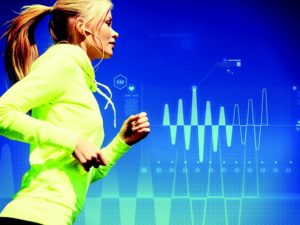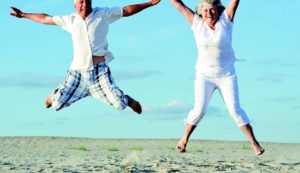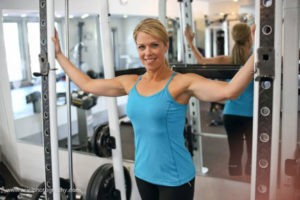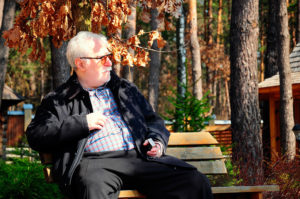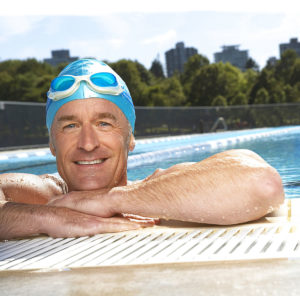Functional Aging/Older Adults
Fit-Tech Trends to Watch in 2017
Fitness technology is part of the fitness industry's "new normal," but it's changing rapidly. Many of the fitness technologies we saw at the beginning of last year have already morphed into new and improved devices and features. We should expect more exciting updates this year as fit-tech companies, app developers and tech-savvy fitness brands continue to iterate.
Lifting Weights Builds Mental Muscle
Older adults who have mild cognitive impairment or could be at risk for it may want to head for the weight room. A study by researchers in Australia has found that progressive strength training is helpful in boosting brain power.
Researchers Warn Seniors: Avoid High-Intensity Exercise
High-intensity exercise is all the rage these days. But for some—particularly, older adults—too much intensity may do more harm than good, warns a new study.
The study’s primary purpose was to understand the effects of various forms of leisure-time physical activity on the cardiovascular health and mortality rates of older adults. To determine these effects, researchers studied the records of 3,298 individuals. Their average age at enrollment was 69, and the median follow-up period was 17 years.
7 Principles for Outstanding Boomer Workouts
Do you teach or train generally healthy, moderate- to high-functioning baby boomers? Or are you thinking of directing more of your efforts to exercisers over 50? If so, be among the first to learn targeted principles you can weave into clients' or class participants' workouts.
Whether you're a small-class leader, a one-on-one trainer or a group fitness instructor, applying seven specific principles will allow you to offer the most effective sessions for midlifers and older boomers.
Menopause Symptoms: Can Yoga Help?
"Joanne," aged 51, presents with hot flashes and vaginal atrophy. She feels depressed, anxious, irritable, fatigued and not as confident in herself as she once was. Somehow she feels out of control. Her body is behaving unpredictably: She doesn't know when her next hot flash is coming or how to control the fat that is shifting up toward her waist.
Ageism and the Fitness Industry
At what age does a person become old? Is it 50 or 65 or 75? I've known healthy 75-year-olds who could outrun, outswim and outlift me, and I've known diseased 60-year-;olds who'd be short of breath walking to the mailbox.
How to Market Exercise Classes for Older Adults
The image of the cookie-baking, rocking chair–bound, bespectacled grandma is about as outdated as, well, leg warmers. It’s no secret that today’s older adult is “not your grandpa’s retiree.” Among people retiring now, many are socially, mentally and physically active. And that’s why fitness facilities that want to attract this cohort need to be particularly careful about marketing language and schedules.
How This Trainer Helped Her Sister Lose 16 Pounds—And Keep It Off
Learn how she used an investigator’s approach to help her sister lose weight.
5 Fascinating Facts We Learned on IDEA FitFeed This Week
Staying up to date on the latest health and fitness news is important for all industry professionals, but the constant stream of new information can make this challenging. That is where IDEA FitFeed comes into play. This inclusive tool collates top news being shared by fitness professionals around the web and posts it in one convenient location. You can find all of the top headlines from leading news sources without having to flip through multiple websites and pages. Catch up on news from the past week here.
Great Exercises for Older Caregivers
Adults over 50 who are caring for aging parents are not like other fitness clients of similar age.
For starters, caregivers tend to be less healthy. A study by the insurance company MetLife noted that “adult children 50+ who work and provide care to a parent are more likely to have fair or poor health than those who do not provide care to their parents” (MetLife 2011). Another study showed that 17% of caregivers felt their health had gotten worse as a result of their caregiving responsibilities (Feinberg et al. 2011).
Middle-Aged Men Can Improve Bone Health
It’s becoming more widely known that women are not alone in suffering from osteopenia. Men are also at risk
for this age-related disease. A recent report highlights two ways middle-aged men can defend against bone loss.
5 Fascinating Facts We Learned on IDEA FitFeed This Week
Do treadmills accurately count calories burned? How many carbs are right for you? Can meditation slow the aging of your brain? Find the answers to these questions and other relevant news items on IDEA FitFeed. This inclusive tool gathers news articles, research studies, blogs and all content being shared by fitness professionals around the web and posts it in one convenient location.
Farmhand Fitness Among the Trilliums
Praise for IDEA Personal Trainer Institute™ East
Thank you for the great article “Sample Class: Farmhand Fitness,” by
Ryan Halvorson [Class Take-Out, April 2015]. I have a group of older
adults (mean age 70) who train outdoors near Montreal, doing boot
camp–style classes in summer and snowshoeing in winter.
How to Get Older Adults to Sit Less
Many of today’s older adults sit for long periods of time. A new study suggests that regular phone calls can motivate this group to get out of their chairs more often.
Physical Activity in Middle Age Reduces Sudden Cardiac Arrest Risk
Need more help motivating your clients to stay active?
Scientists recently analyzed 1,247 sudden cardiac
arrest (SCA) cases to learn more about links between SCA events and sports participation. Study subjects were aged 35–65. Providing a boon to the active set, the researchers reported that only 5% of sudden cardiac arrests occurred during sports activities. Prevalence was higher in men and among those around 51 years of age. SCA survival rates were higher among active individuals than among those whose cardiac arrests were not sport related.
How to Be an Empathetic Personal Trainer
New beginnings. When Patty Shoaf first met Barbara 19 years ago,
she realized quickly that this would be a client like no other. “I
arrived for a consult at her house and a classy, high-heeled,
67-year-old woman wearing a skirt walked in,” Shoaf recalls.
Self Myofascial Release for Seniors
Did you know it’s important to take care of the fascia—or connective tissue—in your body? The health of connective tissue is a serious concern for older people, as movement restrictions can make it hard for them to perform simple activities of daily living. The condition of our connective tissue depends on two factors—how old we are and what we have done in our lives to keep our tissue healthy, hydrated and flexible.
Activity Requirements for Adults With Limited Mobility
While much of the population is physically able to meet the accepted exercise recommendations for improving health, many people are not. Research from the University Institute on Aging, at the University of Florida, Gainesville, indicates that even modest amounts of activity can prove beneficial for those with physical limitations.
Postmenopausal Women: Jump for Bone Health
Knee osteoarthritis (OA)—a progressive disease that destroys articular tissues and cartilage—affects about 13% of women aged 60 and older. According to a report published in the Caspian Journal of Internal Medicine (2011; 2 [2], 205–12), the percentage of the overall population affected by OA is expected to increase owing to the growth of the older-adult segment and to high overweight and obesity rates. However, this study shows there may a solution for women with mild knee OA: progressive-impact exercise.
Question of the Month
Have you or has the facility where you work delivered any mind-body programs, like tai chi or yoga, to residents of older-adult housing communities? If so, please tell us about it. Let us know what level of care facility (independent or assisted living) was served, and what types of activity programs have been successful. Offer any tips on how you think others might also begin offering such programs.
Share your responses with editor Sandy Todd Webster, swebster@ideafit.com.
